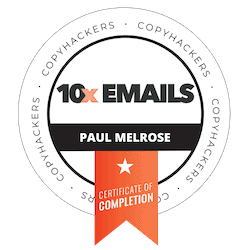Book more calls from your leads with Microcopy principles
[reading time: 4 minutes]
In this edition of The Value Proposition, I’m going to show you how to use microcopy principles to get more of your leads to book calls.
But first…
What is microcopy?
The best explanation I’ve come across is this…
It’s the copy we use directly related to specific actions we want readers to take. Or, in the words of the person who literally wrote the book on microcopy…
“The motivation before the action, instructions that accompany the action and the feedback after the user has taken the action.”
Kinneret Yifrah
Here’s an example…
How one sentence increased revenue by 5-10%
In 2009, Joshua Porter created a checkout page for a client. He also wrote code that let him know when there were errors.
And there were indeed errors.
Between 5-10% of users were entering the wrong address for their credit cards.
He added this line of copy:
“Be sure to enter the billing address associated with your credit card.”
The errors went away.
Joshua wrote about it in his blog and that post is considered the start of modern Microcopy.
Microcopy has come a long way since 2009. Today it’s as much about reassuring and motivating people to take action as it is about clarity and helping them avoid errors.
Here are some ways it does that…
- explaining what happens after you click a button (”you will be taken to…”)
- explaining what won’t happen after you submit your email (”we don’t spam”)
- making choices easy
- making tasks clear and easy
- offering help when something goes wrong
To sum that up, it’s about removing task and motivational friction. In other words, making it easier and more desirable (for the right person) to take action.
We’re going to take these ideas and apply them to the copy around your invitation to book that first call with you…
Less friction = More calls
Ever seen or used something like this?

Seems pretty straightforward and friendly. But it’s a pretty good way of turning otherwise interested leads away. Here’s why…
Most people are happy to read your site or watch your videos because they are 100% in control. But getting on a call with a stranger? That’s a much bigger ask and requires far more trust.
You need to remove that friction by explaining what will happen and not happen…
That means…
- explaining what will happen on the call
- what is expected of them
- will there be a sales offer
- what they’ll get out of the call
- what happens after the call
Have a look at this rewrite and see if it checks all those boxes…

First, let’s look at what I added…
- I told our lead how much time was expected. Because while we know it’s 20 minutes, they don’t. That might be enough to put a good lead off.
- I used the word ‘chat’ to emphasize that this is informal and relaxed.
- I told them exactly what we’ll talk about.
- I reassured them that there would be no sales pitch or offer.
- I clearly put the next step after the call in their hands.
- I added a snippet saying ‘obligation free’ under the button.
But what did I miss?
“What’s in it for me?”
The decision your lead will make comes down to how well you answer the question, ”what’s in it for me?” You might think it’s obvious, and it might be, but you need to say it.
Here’s how…

See how this new copy focuses on the value of making the call?
- the fastest way
- the best way
- you’ll know if this is something you want
Plus, I added an explanation of what happens when they click the button. And yes, that matters. Clicking into the unknown adds friction.
In summary, I created a value proposition and mini-offer around booking a call.
Go review your own site and see if you can copy some of these ideas.
If you would like more content like this, delivered fresh to your inbox every Saturday morning, then subscribe below…









